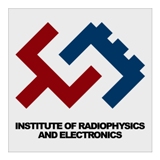Hrachya Nersisyan
Plasma Theory Group
Institute of Radiophysics and Electronics
Armenian National Academy of Sciences
Alikhanian Brothers str. 1, 0203 Ashtarak, Armenia
Centre of Strong Fields Physics
Yerevan State University
Alex Manoogian str. 1, 375025 Yerevan, Armenia
Experience:
- Scientific Secretary, IRPhE (March, 2010).
- Leading Scientific Researcher, Centre of Strong Fields Physics, Yerevan State University (2008 to present).
- Leading Scientific Researcher, Division of Theoretical Physics, IRPhE (2006 to present).
- Senior Scientific Researcher, Division of Theoretical Physics, IRPhE (1994-2006).
- Scientific Researcher, Division of Theoretical Physics, IRPhE (1993-1994).
- Postgraduate Research Assistant, Department of Plasma Theory, P.N. Lebedev Physics Institute, Moscow (1987-1989).
- Postgraduate Research Assistant, Laboratory of Radiation Physics, Yerevan Physics Institute (1986-1987).
Education:
- Ph.D. student, Department of Plasma Theory, P.N. Lebedev Physics Institute, Moscow (1989-1993).
- Student, Physics Department, Yerevan State University (1981-1986).
Scientific Degrees:
- Doctor of Mathematical and Physical Sciences, Yerevan State University (2000).
- Ph.D. in Physics & Chemistry of Plasma, Lebedev Physics Institute, Moscow (1993).
- M.S. in Theoretical Physics, Yerevan State University (1986).
Visiting Positions:
- Guest Researcher, Institut für Theoretische Physik II, Universität Erlangen, Germany (2004-2005; April-May, September-November, 2006; March-April, October-December, 2007).
- Alexander von Humboldt Fellowship, Institut für Theoretische Physik II, Universität Erlangen, Germany (2001-2002; January-April, 2006; October-December, 2008; October-December, 2009).
- DAAD Fellowship, Institut für Theoretische Physik II, Universität Erlangen, Germany (1999).
- Guest researcher, Laboratoire de Physique des Gaz et des Plasmas, Université Paris-XI, Orsay, France (1997).
Prizes:
- Armenian President Prize and Gold Medal in Natural and Technical Sciences (2001)
Ph.D. Students:
- Karine Sargsyan (2013)
- Aram Movsisyan (2007)
- David Osipyan (2003)
- Aram Hovhannisyan (2000)
- Ruben Gevorkyan (1997)
Scientific Interests and Research Areas:
- Ion and ion-cluster beams stopping in plasmas
- Transport phenomena in a magnetized plasma
- Scattering and transformation of intense electromagnetic waves in plasmas
- Interaction of charged particles beams with a solid surface
- Generation of electromagnetic wake-fields by intense laser pulses and charged particle beams in plasmas
- Microfield fluctuations and radiative transitions in a strongly coupled two-component plasmas
In particular:
Theoretical investigations on the dynamical and transport properties of strongly coupled Coulomb systems (dense plasma, ion beams in storage rings, ions in traps) substantially assisted by applying numerical approaches like molecular dynamics (MD), particle-in-cell (PIC) and classical trajectory Monte Carlo (CTMC) computer simulations. Some particular topics are:
- Energy loss of heavy ions in a plasma (nonlinear heavy ion stopping), cluster-ion-beam stopping in plasma (correlation effects, Coulomb explosion)
- Ion stopping and transport in magnetized plasma, Antiproton and ion cooling by electrons and positrons in traps, electron cooling in heavy ion storage rings
- Dynamic properties of strongly coupled Coulomb systems, Correlation and response functions of nonideal plasmas, In particular the dynamic structure factor and the conductivity of two-component plasmas.
PUBLICATIONS
BOOK
Interactions between charged particles in a magnetic field: A theoretical approach to ion stopping in magnetized plasmas
H.B. Nersisyan, C. Toepffer, and G. Zwicknagel
Springer, Heidelberg, New York 2007, ISBN: 9783540698531.
CHAPTERS IN BOOK SERIES AND REVIEW PAPERS
Interaction of ion beams with plasmas: Energy loss and equipartition sum rules
H.B. Nersisyan and A.K. Das
Advances in Plasma Physics Research, vol. 6 (ed. Francois Gerard).
Chapter 2, pp. 81-125 (Nova Science, New York, 2008), ISBN: 1-60021-923-3.

